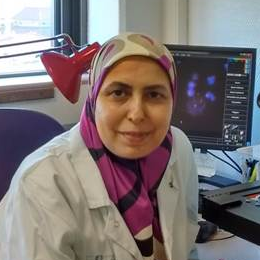Triggering Forces of Chromosome Instability
A special issue of Genes (ISSN 2073-4425). This special issue belongs to the section "Molecular Genetics and Genomics".
Deadline for manuscript submissions: closed (20 March 2023) | Viewed by 30019
Special Issue Editors
Interests: clinical onco-hematology; lymphoma; chromosomal instability; telomeres
Special Issues, Collections and Topics in MDPI journals
Interests: cytogenetics; telomere; DNA repair; radiation effects; genotoxic stress
Special Issues, Collections and Topics in MDPI journals
Special Issue Information
Dear Colleagues,
Chromosomal instability has proven an essential biomarker for the management of patients with cancer, inflammatory diseases, and of individuals in otherwise healthy populations exposed to genotoxic agents, and of their progeny.
Chromosomal instability is defined as the progressive accumulation of numerical and structural chromosomal anomalies.
Ample evidence acquired during the past decades has demonstrated the predictive and prognostic value of chromosomal instability as a biomarker for treatment response and clinical outcomes in these populations.
Substantial progress has been achieved for the detection and identification of chromosomal instability, and cytogenetic analyses have, until now, remained the most precise and reliable techniques utilized. However, genomic analyses have lately made a sensational entrance into the clinic.
In spite of the achievements applying chromosomal instability as biomarkers in the clinic, the development and standardization of the approaches for their detection are still required for the use of this concept in personalized medicine.
This Special Issue in Genes, entitled “Triggering Forces of Chromosomal Instability”, gathers original research papers and review papers on the development of novel approaches for the detection of chromosomal instability, on the underlying mechanisms leading to chromosome instability in different populations , on implications of chromosomal instability in the clinical outcomes of patients, and finally, on the use of insights into chromosomal instability mechanisms to design novel and specific therapeutic interventions that may improve future treatments.
Prof. Patrice P. Carde
Dr Eric Jeandidier
Dr Steffen Junker
Dr Radhia M'kacher
Guest Editors
Manuscript Submission Information
Manuscripts should be submitted online at www.mdpi.com by registering and logging in to this website. Once you are registered, click here to go to the submission form. Manuscripts can be submitted until the deadline. All submissions that pass pre-check are peer-reviewed. Accepted papers will be published continuously in the journal (as soon as accepted) and will be listed together on the special issue website. Research articles, review articles as well as short communications are invited. For planned papers, a title and short abstract (about 250 words) can be sent to the Editorial Office for assessment.
Submitted manuscripts should not have been published previously, nor be under consideration for publication elsewhere (except conference proceedings papers). All manuscripts are thoroughly refereed through a single-blind peer-review process. A guide for authors and other relevant information for submission of manuscripts is available on the Instructions for Authors page. Genes is an international peer-reviewed open access monthly journal published by MDPI.
Please visit the Instructions for Authors page before submitting a manuscript. The Article Processing Charge (APC) for publication in this open access journal is 2600 CHF (Swiss Francs). Submitted papers should be well formatted and use good English. Authors may use MDPI's English editing service prior to publication or during author revisions.
Keywords
- chromosomal instability
- DNA repair
- telomere
- senescence
- aging
- cancer
- microenvironment
- inflammation
- viral infection
- genotoxic agents
- clinical outcome
- treatment
Benefits of Publishing in a Special Issue
- Ease of navigation: Grouping papers by topic helps scholars navigate broad scope journals more efficiently.
- Greater discoverability: Special Issues support the reach and impact of scientific research. Articles in Special Issues are more discoverable and cited more frequently.
- Expansion of research network: Special Issues facilitate connections among authors, fostering scientific collaborations.
- External promotion: Articles in Special Issues are often promoted through the journal's social media, increasing their visibility.
- Reprint: MDPI Books provides the opportunity to republish successful Special Issues in book format, both online and in print.
Further information on MDPI's Special Issue policies can be found here.









